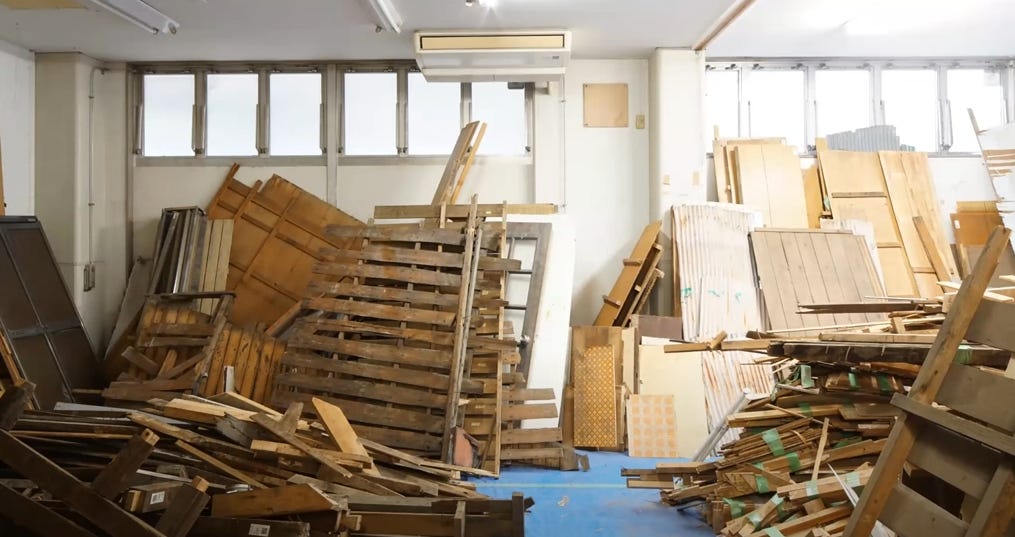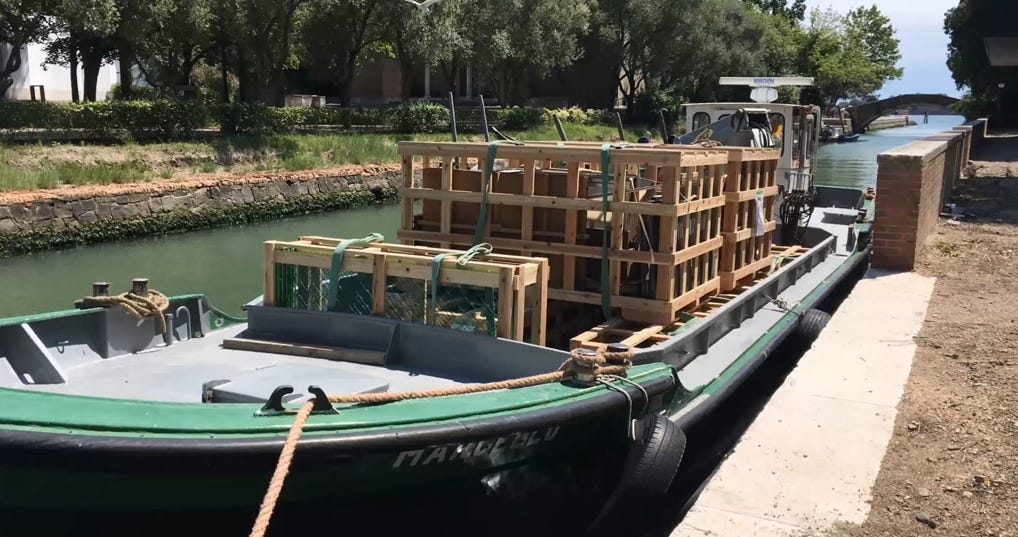Embodied Memories
How a simple house spread its wings and journeyed into eternity.
Abandoned Homes and Buildings can still feel inhabited, even long after its residents have left. Peeling wallpaper, handwritten notes inside closets, or initials carved into a windowsill tell silent stories of love, struggle, and daily life. The emotional value assigned to objects stems from our innate tendency to connect memories and feelings to physical items and spaces. These objects often act as anchors to significant moments, relationships, or experiences, providing comfort and a sense of continuity
In the 2021 Venice Architecture Biennale, the Japanese Pavilion hosted an exhibition titled "Co-ownership of Action: Trajectories of Elements," curated by Kozo Kadowaki. Central to this exhibition was the Takamizawa House, a wooden structure originally built in 1954. The house was meticulously disassembled in Japan and transported to Venice, where its components were repurposed within the pavilion. Some elements were transformed into functional objects like benches placed in the pavilion's garden, stools and lamps were sold and spread across the world, while others were displayed to narrate the house's architectural evolution and the stories of its inhabitants from 1954 to 2019.
The Japanese Pavilion displayed numerous everyday objects and materials found in the Takamizawa House - items that could just as easily be found in ordinary homes around the world. However, the traces of time, human activity and lived experiences imprinted upon them transformed these seemingly insignificant and disposable items into something valuable, personal, and meaningful.
The act of applying personal signatures to things overlay lifeless objects with memory, layers of human touch, and emotional significance—giving them a sense of life. Paradoxically, by altering or even damaging objects and surfaces, we make them indestructible in our perception, preserving and cherishing them for their timeless presence and enduring connection to us.
.
When disassembled and transported to Venice, these imperfect objects took on a new, elevated significance. What initially seemed like ordinary, lifeless elements revealed rich stories—of builders carefully positioning posts and beams in 1954, of past owners shaping the house to reflect their dreams and ambitions, of children exploring and expanding their world within its walls, and of the care and repairs that preserved its surfaces over time. This recontextualization of old materials in a new setting highlights the enduring emotional and aesthetic value in what is often seen as outdated or flawed.
It reminds us that buildings are more than just physical structures—they are repositories of emotion, labor, and memory. Through their repurposed presence in Venice, these materials continued to live, communicate, and connect with new audiences, just as they did in their original home in Japan. The house, once a stable and familiar structure, was dismantled, its elements scattered and recontextualized, emphasizing that even if nothing remains unchanged, some things may still contain value and meaning - or even a “soul”.
Architecture exists within a vast space-time continuum, where the actions of countless individuals continually appear and disappear. By showcasing the house's materials imbued with the memories and experiences of its former residents, the exhibition emphasized how physical objects can embody emotional traces, serving as tangible links to personal and collective histories.
Reflecting on the journey of the Takamizawa House—from its initial construction to its disassembly, reconstruction, and eventual dispersion as recycled tokens of physical memories around the world—Kozo Kadowaki remarked:
“So maybe this house is not something I can own. It is a kind of common property that has passed through the hands of many people. Once we were awakened to this kind of feeling, you will see all buildings as common property of society”
In historical buildings or family homes, wooden floors often bear the marks of generations—scuff marks from children playing, worn-down areas where people have stood for years, and stains from accidental spills. Each imperfection tells a story.
The repeated handling of an object embeds memory into its surface. A wooden banister embalmed and shaped by human touch. A well-loved book with dog-eared pages and scribbled notes feels personal in a way that a pristine copy never could.
Unlike mass-produced perfection, signs of wear and decay often make an object more meaningful, as they serve as physical evidence of time and memory.
In an age of resource scarcity, we need a softer look at things we are surrounded by. They are not dead objects - but full of life. Spaces and objects store memories. Erasing them will evidently result in sense of loss.
“It is absurd to claim that our actions belong solely to ourselves”


















